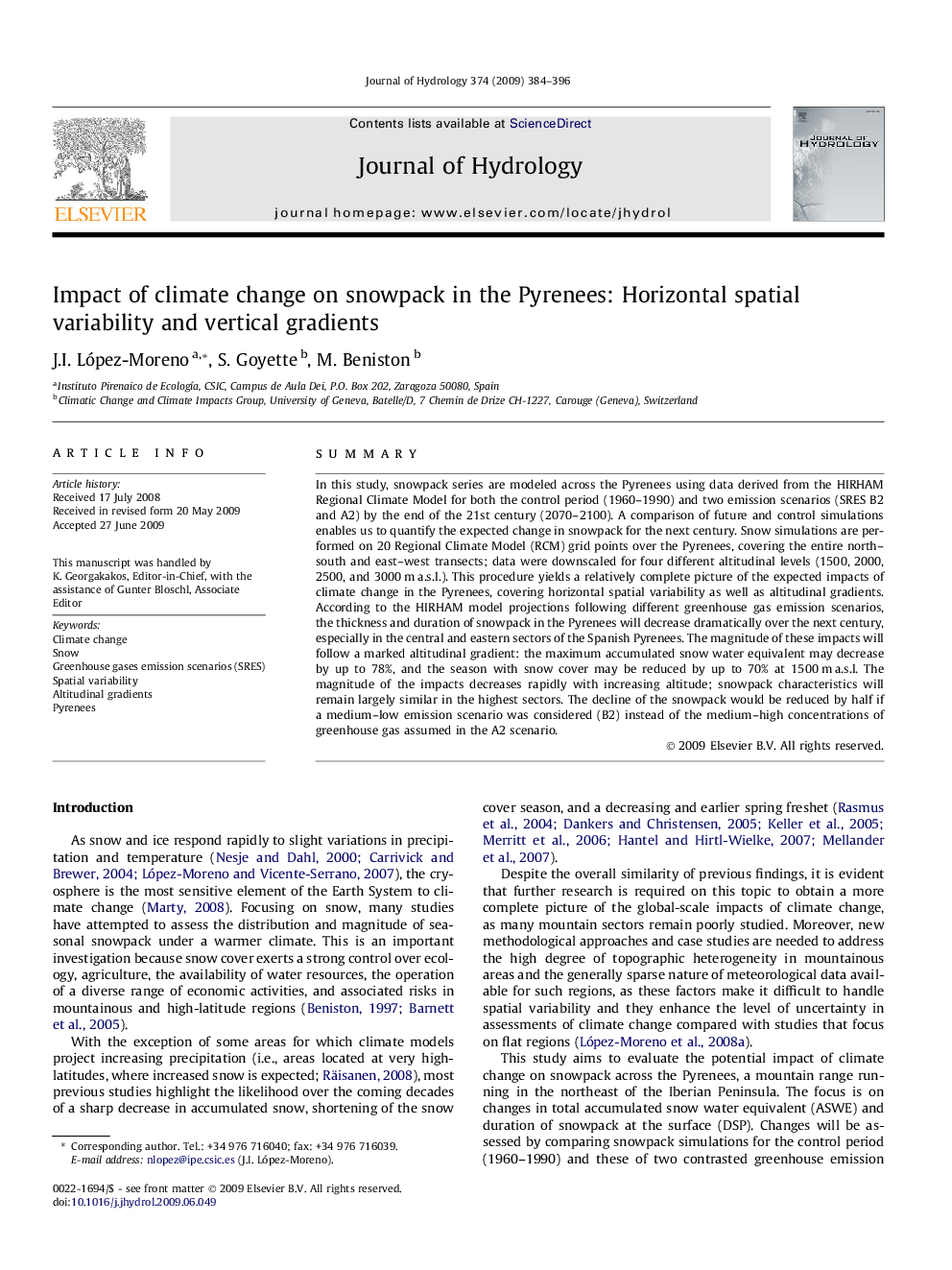| Article ID | Journal | Published Year | Pages | File Type |
|---|---|---|---|---|
| 4578771 | Journal of Hydrology | 2009 | 13 Pages |
SummaryIn this study, snowpack series are modeled across the Pyrenees using data derived from the HIRHAM Regional Climate Model for both the control period (1960–1990) and two emission scenarios (SRES B2 and A2) by the end of the 21st century (2070–2100). A comparison of future and control simulations enables us to quantify the expected change in snowpack for the next century. Snow simulations are performed on 20 Regional Climate Model (RCM) grid points over the Pyrenees, covering the entire north–south and east–west transects; data were downscaled for four different altitudinal levels (1500, 2000, 2500, and 3000 m a.s.l.). This procedure yields a relatively complete picture of the expected impacts of climate change in the Pyrenees, covering horizontal spatial variability as well as altitudinal gradients. According to the HIRHAM model projections following different greenhouse gas emission scenarios, the thickness and duration of snowpack in the Pyrenees will decrease dramatically over the next century, especially in the central and eastern sectors of the Spanish Pyrenees. The magnitude of these impacts will follow a marked altitudinal gradient: the maximum accumulated snow water equivalent may decrease by up to 78%, and the season with snow cover may be reduced by up to 70% at 1500 m a.s.l. The magnitude of the impacts decreases rapidly with increasing altitude; snowpack characteristics will remain largely similar in the highest sectors. The decline of the snowpack would be reduced by half if a medium–low emission scenario was considered (B2) instead of the medium–high concentrations of greenhouse gas assumed in the A2 scenario.
